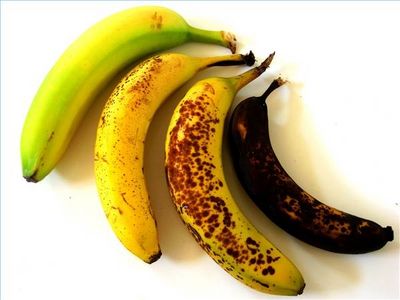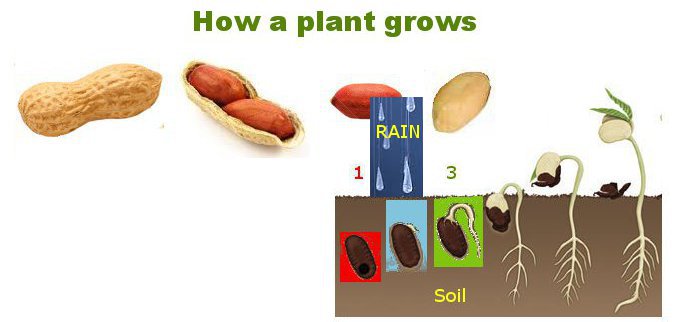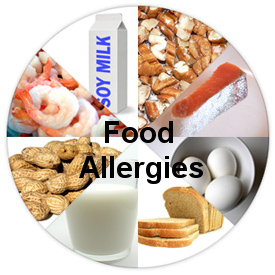By Walter Sorochan Emeritus Professor San Diego State University
Posted June 12, 2013; Updated October 28, 2021. Disclaimer The information presented here is for informative and educational purposes only and is not intended as curative or prescriptive advice.
Being able to talk, walk, see, hear, breath and eat food is made possible by enzymes in your body. Indeed, all living things, including humans, bacteria and plants, make many special enzymes that regulate life functions. Enzymes make life possible.
This article focuses on special plant food enzymes referred to as inhibitors that are found in some foods.
|
“Enzymes are the ‘labor force’ that builds your body just like construction workers are the labor force that builds your house. You may have all the necessary building materials and lumber, but to build a house you need workers, which represent the vital life element. Similarly, you may have all the nutrients – vitamins, proteins, minerals, etc., for your body, but you still need the enzymes – the life element – to keep the body alive and well.” Edward Howell, who spent most of his lifetime researching enzymes. |

Enzymes are complex proteins that act as catalysts [ speed up or slow down processes ] in almost every biochemical process that takes place in all living organisms, including the human body. Enzymes are usually bound to vitamins, minerals, amino acids and especially magnesium, [ co-enzymes ] in order to work in the human body. Harder: enzyme power 2001
Where do digestive enzymes come from? You obtain most of your digestive enzymes from the food that you eat, and your body also produces enzymes of its own. Plant enzymes are much more effective than body enzymes because they begin pre-digestion in your mouth, they are not destroyed by the acids in your stomach, and they function in both an acid and in an alkaline environment. Unfortunately, because of soil depletion, herbicide sprays, boiling, microwaving and pasteurization, etc., we do not obtain anywhere near the number of enzymes that we need. Harder: enzyme power 2001 Fallon: Food enzymes 2000
 Human cells naturally produce about 10,000 different enzymes which are essential in normal metabolism.
ACS: enzyme therapy 2008 Each enzyme usually has only one function, or works on one material,
or substrate, to produce one product; therefore, enzymes are specific in their function.
This has often been referred to as a lock and key system [ animation on right
]. For an enzyme [ red substrate in animation on right ] to work, the material
[ yellow in animation ] it works upon must be present. If no such
material is available to the enzyme, the enzyme performs no function.
[ e.g Broccoli enzymes work only on broccoli ]
Human cells naturally produce about 10,000 different enzymes which are essential in normal metabolism.
ACS: enzyme therapy 2008 Each enzyme usually has only one function, or works on one material,
or substrate, to produce one product; therefore, enzymes are specific in their function.
This has often been referred to as a lock and key system [ animation on right
]. For an enzyme [ red substrate in animation on right ] to work, the material
[ yellow in animation ] it works upon must be present. If no such
material is available to the enzyme, the enzyme performs no function.
[ e.g Broccoli enzymes work only on broccoli ]
Enzymes are responsible for constructing, synthesizing, carrying, dispensing, delivering, and eliminating the many ingredients and chemicals that our body uses in its daily business of living. Enzymes are required for your body to function properly, for without enzymes you wouldn't be able to breathe, swallow, drink, eat, or digest your food. Metabolic enzymes in the liver also act to neutralize poisons and carcinogens, such as pollutants, DDT and tobacco smoke, changing them into less toxic forms, which the kidney can then eliminate. After death, enzymes also play a role in the decomposition of once living tissue.
 For example, some enzymes in
a tomato help it to ripen while other enzymes produced by the tomato cause it to
decay. Not only tomatoes, but fruits like apples, banana, grapes and vegetables
like potato also turn brown with time [ illustration on right ]. This is due to the presence of the enzyme polyphenoloxidases
[PPO] in the layers just below the outer skin that brings about changes [ like
freshness] in the
life of foods. Each plant has specific essential enzymes that regulate life
functions of that plant [ lock and key system ].
For example, some enzymes in
a tomato help it to ripen while other enzymes produced by the tomato cause it to
decay. Not only tomatoes, but fruits like apples, banana, grapes and vegetables
like potato also turn brown with time [ illustration on right ]. This is due to the presence of the enzyme polyphenoloxidases
[PPO] in the layers just below the outer skin that brings about changes [ like
freshness] in the
life of foods. Each plant has specific essential enzymes that regulate life
functions of that plant [ lock and key system ].
Plant seeds, especially legumes, nuts and seeds contain unique enzymes, referred to as inhibitors. Inhibitors are protein substances that bind to a hibernating plant enzyme and decrease or interfere with this enzyme's activity. Inhibitors allow seeds to lie dormant [ storage ] and wait for good growth conditions; like rain and sunshine warmth, to begin sprouting and grow into a young new plant. Inhibitors nullify the body’s own digestive enzymes from working on them. Article by DeFelice: Enzymes is no longer active. Article by Rojek: enzyme nutrition is no longer active.
The illustration below depicts how seeds, like peanuts, grow into plants.

Peanuts have an outer shell to keep peanut seed protected from the outside. The seed has another outer protective skin [ brown-red color above ] that has inhibitor chemicals that make the seeds distasteful and even poisonous to predators; allowing seeds to survive. When the outer peanut skin becomes soaked with rain water [ blue above ], the water leaches out most of the inhibitor. With the inhibitor removed by the water, the nutrients in the peanut seed [ green color above ] begin to release the stored vitamins, minerals, fats and proteins. These nutrients allow the seed to sprout and germinate a root and stem and grow into a plant.
However, raw seeds are safe to eat when the water leaches out the inhibitor enzymes. Humans may be unaware that inhibitor enzymes in seeds can cause allergies and other health problems. Such raw seed problems can readily be avoided and this is dealt with later on.
Table below lists some raw foods that contain enzyme inhibitors. Since the reaction that they can trigger can be quite severe, it is worth viewing the different food inhibitors and the health problems they can cause. Please be aware that the information in the list may be incomplete:
| Food item: | Inhibitors: | Health problem: |
| alfalfa | non-protein amino acid L-canavanine | hemolytic anemia may cause lupus |
| almonds | phytic acid, tannic acid and an enzyme inhibitor in their brown skin | allergy |
| Bananas | none | |
| Beans Lima [ raw ] | trypsin, linamarin, a cyanogenic glucoside | cause gas, illness, allergy |
| Buckwheat greens [Not the grain seed] | fagopyrin | sensitivity to sunburn, nerve problems: tingling, numbness, etc |
| Cassava | amygdalin | allergy |
| Celery, celery root, parsley, & parsnips | psoralens, aka furocoumarin | sensitivity to sunlight, rashes, blisters, and skin discoloration |
| Eggs: white | Ovomucoid or trypsin, avidin | egg allergy, inhibits Biotin absorption |
| Figs | psoralens | phytophotodermatitis |
| Grass pollen | Profilin, rPhl p 1 and rPhl p 5 | allergy |
| Kelp based supplement | arsenic compounds, arsenosugars, and arsenobetaine | neurologic, dermatologic, and gastrointestinal symptoms |
| Klamath Lake Blue-Green Algae (Aphanizomenon flos-aquae) | Microzystin, hepatotoxin microcystin |
liver, kidneys and brain, get cold, have difficulty concentrating, tingling and numbness |
| Milk [cow's] | lactoferrin, calcium and bovine casein |
Lactose intolerance, inhibit iron absorption allergy |
| Mushrooms: Common Agaricus bisporus & portobello | agaritine which metabolizes into a hydrazine | allergy |
| Nuts: pecans, peanuts, walnuts | Unknown, phytic acid | allergy, anaphylaxis |
| Potatoes with green skin | solanine | may cause arthritis |
| Potato | glycoalkaloids alpha-solanine and alpha-chaconine |
can cause severe illness acetylcholinesterase inhibitors |
| Potato Sweet | trypsin | allergy |
| Rubbarb leaves | oxalic acid, anthraquinone glycoside | toxic to kidneys |
| Seaweed hijiki | inorganic arsenic | anemia and liver damage |
| Seeds: Flax, sunflower | phytic acid | interfere with body enzymes |
| Soy Raw | trypsin | goitrogens |
| Spelt [form of wheat] | gluten | mild form of gluten reaction |
| Spinach | oxalate | Prevents Fe, Ca absorption |
| Wheat | gluten, prolamin a-amylase/trypsin | allergy, anaphylaxis |
NOTE: Table discrepancies: Information gathered from many sources, noteably Reference to Rothstein: List Food toxins is no longer active. Wiki: Enzyme inhibitor Article by Rojek: enzyme nutrition is no longer active. Many inhibitors in plants have yet to be identified; thus this list in incomplete. Plant inhibitors can induce reactions that vary from very mild to severe symptoms when ingested by humans!
Reactions to ingesting inhibitor enzymes may include varying degrees of:
 bloating, feeling sick or nausea, headache, vomiting, diarrhea, skin rash,
inflammation, dizziness, joint pain; allergy and severe illness. The severity of health problems stated in the table are general and will vary from
person to person, due to dosage and individual biochemical diversity.
On
the other hand, inhibitors can also affect how nutrients in a plant or seed are
absorbed or ingested. For example Phytic acid has been reported to impair the absorption of minerals and trace elements such as calcium,
magnesium, zinc, and iron in humans.
Bohn: phylic acid inhibitor 2004
bloating, feeling sick or nausea, headache, vomiting, diarrhea, skin rash,
inflammation, dizziness, joint pain; allergy and severe illness. The severity of health problems stated in the table are general and will vary from
person to person, due to dosage and individual biochemical diversity.
On
the other hand, inhibitors can also affect how nutrients in a plant or seed are
absorbed or ingested. For example Phytic acid has been reported to impair the absorption of minerals and trace elements such as calcium,
magnesium, zinc, and iron in humans.
Bohn: phylic acid inhibitor 2004
There are two ways to destroy enzyme inhibitors: The first is cooking the food; however, this also destroys the good plant enzymes. Plant enzymes are more heat-sensitive than vitamins and are destroyed by cooking temperatures above 118º F, as in baking, cooking, pasteurization, canning, and microwaving. Fallon: Food enzymes 2000
The second way, which is preferable, is soaking raw seed plants [ with skin ] in warm acidic water for an appropriate duration of time [ usually 6-24 hours ] Nuts-seeds: soaking times and then draining the water. The water releases the protective protein inhibitor in the seed hull or outer skin coating, allowing germination and sprouting to start. Sprouting deactivates the enzyme inhibitors and makes nutrients in grains, nuts and seeds more readily available and also increases the content of natural good enzymes that help begin the pre-digestion of grains and seeds in the mouth and stomach. Plant enzymes work in the mouth and the stomach at their own body temperature and pH level, where they predigest relative food before the stomach enzymes do so. Plant enzymes also operate in the small intestine, aiding pancreatic enzymes in continuing the digestive process. A major point being made here is that enzymes that occur naturally in plants are a prerequisite for digestive enzymes in the body to be effective.
Using food enzymes to your advantage:
1. Buy raw seed foods like beans. [ seeds that have not been heated or roasted ]
2. Soak the raw seeds [beans] in water for 4 hours, drain the water and continue soaking for an additional 4 to 24 hours. Nuts-seeds: soaking times
Nuts and seeds contain "enzyme inhibitors" that protect the nuts and seeds by keeping them in a hibernation state until conditions are proper for germination. [ Such as a heavy rain storm.] Soaking nuts and seeds in a bowl of water is one way of "tricking" the enzyme inhibitors into thinking that it's time to let the seeds "wake up" and start to grow.
3. Drain the water & Rinse: After seeds have soaked for their recommended times drain the water [ which will look dirty due to the enzyme inhibitors that have been removed from the nuts and seeds ] and then rinse beans [seeds] well before eating. Nuts-seeds: soaking times
4. Dry and eat healthy living seeds. These de-inhibited seeds have growth enzymes that will help to release the nutrients and start digesting the seed contents before you chew the seeds in your mouth. Chewing the seeds [ mastication ] stimulates the further release of digestive enzymes from the seeds. When the chewed food from the mouth arrives in the stomach, the released pre-digestive enzymes of the food [ seeds ] continue to break down the food in the stomach for about 30 minutes. Thereafter, the stomach enzymes take over.
Cooking food destroys the pre-digestive enzymes that every raw food has. On the other hand, just cutting up raw broccoli into smaller pieces stimulates the release of enzymes that start digesting broccoli. Chewing raw broccoli further stimulates the release of pre-broccoli enzymes. Because raw foods contain enzymes they spare the body’s metabolic enzymes from having to be given up to digest cooked food.
Live vs dead foods: Live foods are raw foods that have not been heated above 117 degrees Fahrenheit. Their growth-digestive enzymes are still active and thus alive. Seeds and food that have been heated above 118 degrees Fahrenheitare referred to as dead foods and have their enzymes destroyed. Dead foods are considered to be more difficult to digest. Fallon: Food enzymes 2000 There appears to be controversy about live/dead foods. Billings: plant enzymes 2011
Summary:
All this information is probably new to you. Since you have been brainwashed to cook most of the foods you eat as well, as eat convenience and restaurant foods, it may be difficult for you to switch to eating fresh raw vegetables and raw seeds instead of roasted seeds.
As you may have surmised by now, there are many different kinds of enzymes. Enzymes are complex proteins that act as catalysts in almost every biochemical process that takes place in plants and human bodies. Most enzymes need help from vitamins, minerals, amino acids and especially magnesium, to work in the human body.
Raw foods have the specific enzymes to digest themselves. This has often been referred to as a lock and key system.
All legumes, raw nuts and seeds, contain enzyme inhibitors. The inhibitors can prevent those foods from growing. The inhibitors also nullify the food’s own digestive enzymes from working on them. This is why they are so difficult to digest and why we may feel tired after eating them. Article by Rojek: enzyme nutrition is no longer active.
Grains, nuts, legumes and seeds are rich in enzymes, as well as other nutrients, but they also contain enzyme inhibitors. Unless deactivated, these enzyme inhibitors can put an even greater strain on the digestive system than cooked foods. Soaking raw seeds in warm acidic water deactivates enzyme inhibitors and makes nutrients in grains, nuts and seeds more digestible. Fallon: Food enzymes 2000
Convenience and preserved foods have been either heated and/or altered with chemical preservatives, thereby destroying their natural enzymes.
References:
Agriculture and Consumer Protection, "7. Toxic substances and anti-nutritional factors," Food and Agriculture Organization of the United Nations. Agriculture Consumer Protection: Toxic substances
American Cancer Society, "Enzyme Therapy," ACS, November 01, 2008. ACS: enzyme therapy 2008
Battais F., et la., " Wheat grain allergies: an update on wheat allergens," Eur Ann Allergy Clin Immunol, 2008, vol 40, N3, 67-76. Battais: Wheat grain allergies update 2008
Billings Thomas E., "Beyond Vegetarianism," 2011. Billings: plant enzymes 2011
Bohn Torsten, Lena Davidsson, Thomas Walczyk, and Richard F Hurrell, "Phytic acid added to white-wheat bread inhibits fractional apparent magnesium absorption in humans1,2,3," Am J Clin Nutr March, 2004, vol. 79 no. 3, 418-423. Bohn: phylic acid inhibitor 2004
DeFelice Karen, "Frequently Asked Questions about enzymes," Enzyme Stuff, August 25, 2005. [ adapted excerpt from book 'Enzymes for Autism and other Neurological Conditions'.] Article by DeFelice: Enzymes is no longer active.
All raw foods, including meats, have some enzyme activity. Once the bananas are picked, enzymes in the fruit convert certain amino acids into ethylene gas. Ethylene gas, in turn, stimulates the production of several enzymes that change the color, texture and flavor of the banana. Green bananas have amylase, an enzyme that breaks down starch to glucose. In a number of days, the amylase converts the raw starch of the banana to sugar, which is why darkened bananas are so much sweeter tasting.
Dietrich Daniel,"AFA algae - toxic cocktail fountain or health?" University of Constance, 2008, Press Release No. 12 of 15.01. Article by Dietrich:AFA algae toxic is no longer active.
"Prof. Daniel Dietrich, a toxicologist at the University of Konstanz, warns against the careless consumption of AFA algae preparations. He has investigated eight AFA algae supplements [ Klamath Lake in Oregon ] from the market in Germany and Switzerland on toxins and concludes: "We have sixteen different products that are sold on the German and Swiss markets tested. Ten have exceeded the sum guideline for the toxin Microzystin. And sometimes quite violently. Microzystine are a powerful liver poison, which has a similar effect as the poison amanita mushrooms. Mikrozystine can also be toxic to the brain and the kidneys."
Fallon Sally and Mary G. Enig, "Edward Howell," [Food enzymes] Weston A. Price Foundation, January 01, 2000. Fallon: Food enzymes 2000 The Cookbook that Challenges Politically Correct Nutrition and the Diet Dictocrats, by Sally Fallon with Mary G. Enig, ©1999.
García-Carreño Fernando L., Haejung An and Norman F. Haard, "Protease Inhibitors in Food Processing," Madame Curie Bioscience database, July 1, 2001. García-Carreño: food inhibitors 2001
Harder Ron, "The Power of Enzymes," The Power of Enzymes, October, 2001. Harder: enzyme power 2001
Howell, Eduard, "What are enzymes," [Interview] HEALTHVIEW Newsletter, date unknown. Article by Howell interview is no longer active
"HEALTHVIEW: Do animals also have a special section of the stomach where food digests itself?Lewis: arsenic in kelp 2007 Abstract: This study has measured the content of total and inorganic forms of arsenic in seaweed available on retail sale for consumption, to provide data for dietary exposure estimates and to support advice to consumers. A total of 31 samples covering five varieties of seaweed were collected from various retail outlets across London and the internet. All of the samples were purchased as dried product. For four of the five varieties, soaking was advised prior to consumption. The recommended method of preparation for each individual sample was followed, and total and inorganic arsenic were analyzed both before and after preparation. The arsenic remaining in the water used for soaking was also measured. Arsenic was detected in all samples with total arsenic at concentrations ranging from 18 to 124 mg/kg. Inorganic arsenic, which can cause liver cancer, was only found in the nine samples of hijiki seaweed that were analyzed, at concentrations in the range 67-96 mg/kg. Other types of seaweed were all found to contain less than 0.3mg/kg inorganic arsenic, which was the limit of detection for the method used. Since consumption of hijiki seaweed could significantly increase dietary exposure to inorganic arsenic, the UK Food Standards Agency (FSA) issued advice to consumers to avoid eating it.HOWELL: Absolutely. In fact, some creatures have what I call a food enzyme stomach. There are the cheek pouches of monkeys and rodents, the crop of many species of birds, and the first stomachs of whales, dolphins and porpoises. When birds, for instance, swallow seeds or grains, these grains lie in the crop for 8 to 12 hours. As they sit, they absorb moisture, swell up and begin to germinate. During this germination period, enzymes are formed which do the work of digesting the seeds and grains. Whales, dolphins and porpoises have a first stomach which secretes no enzymes. Whales, for example, swallow large quantities of food without chewing it. The food simply decomposes and digests itself. In the flesh of the fish and other marine life the whale eats is an enzyme, called cathepsin, which breaks down the fish once it has died. In fact, this enzyme is present in almost all creatures. After the whale’s catch has liquefied itself, it passes through a small hole into the whale’s second stomach. It mystifies scientists how the whale’s catch can get through that small hole into the second stomach. They have no idea that self-digestion was at work."
Food and Drug Administration (FDA) food standard for arsenic of 2 ppm, which applies only to animals treated with veterinary drugs, is not relevant.
FDA guidance recommends levels for seafood that are much higher. For example, the level of concern for total arsenic in crustaceans is 86 ppm, a concentration 10 times higher than the amount found in the kelp supplement.
Novozymes, "Rethink tomorrow," Novozymes A/S Krogshoejvej 36 2880 Bagsvaerd, Denmark, 2008. Novoenzzymes: industry & food
Nuts & Seeds. Nuts-seeds: soaking times
Rojek Mark, "Enzyme Nutrition Therapy," 2003. Article by Rojek: enzyme nutrition is no longer active.
Spelt: BENEFITS OF SPELT VERSUS COMMON WHEAT: Spelt vs wheat "legally" related to wheat, so that it must be labeled as such, but it's more like wheat's great, great, grandmother! Check out some of the differences:
1) Gluten: Spelt gluten is water soluble, wheat gluten is not. Spelt gluten is degraded by heat, heat merely relaxes wheat gluten. Spelt gluten is easy to digest, and that of the wheat is NOT!Wikipedia, "Enzyme inhibitor." Wiki: Enzyme inhibitor
2) Enzyme inhibitor: Spelt, with its hard outer hull, has no need of one. Wheat, having no hull, needs an inhibitor to fight off pests. It is because of this inhibitor, and other enzymes, that it is recommended that you soak wheat, or even sprout it, before baking with it in order to make its nutrients more available.
3) Spelt supposedly has the perfect glycemic index!
4) Celiac reaction: confirmed, diagnosed Celiac sufferers who are able to eat spelt, then what you heard is true. However, if you have a gluten intolerance such as Celiac, you are strongly cautioned that there are differing degrees of severity and each individual case is different. You must be responsible to weigh the risk against the possible reward. If you have any allergies or intolerances to wheat, trying spelt should be a decision that you reach only after consulting your physician.